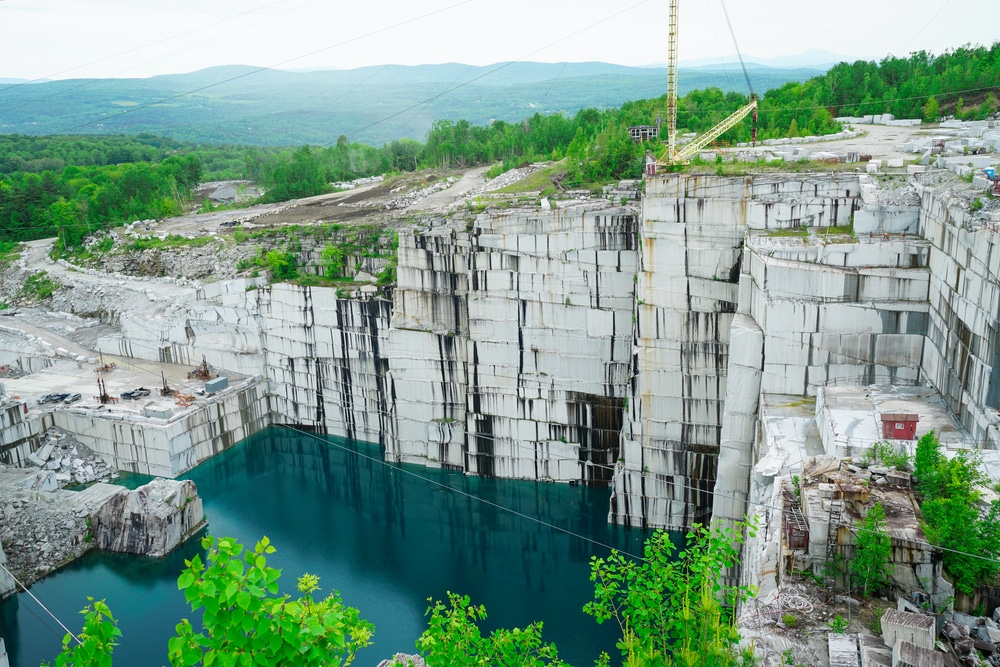The Surprise Treasures: Exploring Granite Quarries in South Africa
The Surprise Treasures: Exploring Granite Quarries in South Africa
Blog Article
Uncovering the Rich Background and Lasting Practices of Granite Quarrying
As we depend on the precipice of revealing the detailed tapestry of granite quarrying, a trip via time exposes not just the physical act of drawing out rock however also the social and historic significance woven right into the very material of this technique. From the ancient beginnings that laid the foundation for modern-day quarrying methods to the sustainable practices that are forming the future of this market, each chisel mark on granite surface areas tells a story waiting to be unearthed (granite quarries in south africa). The tradition of granite quarrying extends far past mere removal; it is a testimony to human ingenuity, strength, and the enduring appeal of this magnificent rock
Ancient Origins of Granite Quarrying
Going back to ancient civilizations, the practice of quarrying granite has been an essential part of human background and architectural innovation. The earliest proof of granite quarrying dates back to ancient Egypt, where large pyramids and intricate sculptures were crafted from this resilient rock. The Egyptians made use of primitive tools to draw out granite blocks from quarries, showcasing the value of this product in their huge constructions.
Moving onward in background, the Greeks additionally made considerable payments to the quarrying of granite. The Greeks made use of granite in various architectural wonders, such as temples and statuaries, showing their skill in shaping and carving this durable rock. The Romans even more improved the techniques of quarrying granite, utilizing advanced tools like knives and hammers to extract and form granite for their renowned structures.
With the centuries, the practice of quarrying granite has evolved, with modern technologies boosting performance while preserving the ageless appeal of this natural rock - granite quarries in south africa. From old people to contemporary home builders, the tradition of granite quarrying continues to shape our world
Advancement of Quarrying Strategies
The development of quarrying methods has been marked by a constant development in the direction of greater effectiveness and precision in drawing out granite. From the primary methods utilized by our forefathers to the innovative modern technologies utilized in modern quarrying procedures, the market has undergone significant improvements. Early quarrying methods included manual work with standard tools such as chisels, hammers, and wedges to remove granite blocks from the earth. As human beings advanced, techniques like fire-setting and primitive nitroglycerins were introduced to facilitate the extraction procedure.
In even more current times, the introduction of machinery reinvented the quarrying industry, allowing much faster removal prices and enhanced efficiency. Technologies such as ruby cord saws, high-pressure water jets, and pneumatic drills have ended up being typical in modern-day quarries, permitting specific cutting and minimized waste. Additionally, improvements in computer-controlled equipment and 3D modeling have actually enhanced quarrying procedures, leading to marginal ecological impact and boosted sustainability techniques. As the need for granite proceeds to climb, the evolution visite site of quarrying techniques stays important to conference sector requires effectively and sustainably.
Social Significance of Granite
Granite holds an extensive social value across various people because of its long-lasting presence in architectural masterpieces and prized monuments. From the stunning pyramids of Egypt to the detailed makings of the Angkor Wat holy place in Cambodia, granite has been a product of choice for revealing grandeur and long life in cultural heritage. In old Rome, granite columns decorated temples and public buildings, representing toughness and durability. The social relevance of granite prolongs beyond its physical characteristics; it symbolizes durability, stability, and timelessness, making it an icon of enduring legacies and practices.

Sustainable Practices in Quarrying
In the middle of the rich background of granite quarrying and its social relevance lies an expanding emphasis on sustainable techniques within the market. As environmental awareness and concerns regarding resource deficiency have heightened worldwide, the quarrying industry has actually progressively embraced lasting techniques to minimize its effect on the environment and bordering neighborhoods.

Additionally, improvement and rehab of quarry websites post-extraction are integral to sustainable methods. By restoring quarried areas to a natural or valuable state, such as creating wildlife habitats or recreational areas, quarriers can counter the ecological impact of their procedures and contribute positively to the regional environment.
Heritage of Granite Quarrying
With a historic background steeped in workmanship and commercial progress, what enduring effect has granite quarrying left on the landscape of modern culture? The heritage of granite quarrying goes beyond simple extraction practices; it has actually shaped architectural wonders, metropolitan landscapes, and cultural heritage worldwide. The durable nature of granite has actually made it a favored choice for monoliths, buildings, and infrastructure, standing as a testimony to the skill and artistry of quarry employees across generations.
Furthermore, see page the economic impact of granite quarrying can not be neglected. The sector proceeds to offer job opportunity and drive regional economies in areas where granite extraction prevails. It has also stimulated technological advancements in quarrying strategies and devices, leading to a lot more effective and lasting methods.
In regards to sustainability, the legacy of granite quarrying includes initiatives to mitigate ecological impacts via improvement tasks and responsible resource administration. By stabilizing economic rate of interests with ecological stewardship, the industry aims to make certain that future generations can continue to take advantage of this long-lasting natural deposit.
Final Thought

Report this page